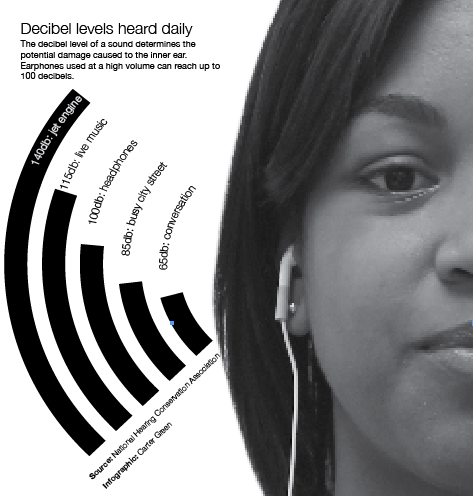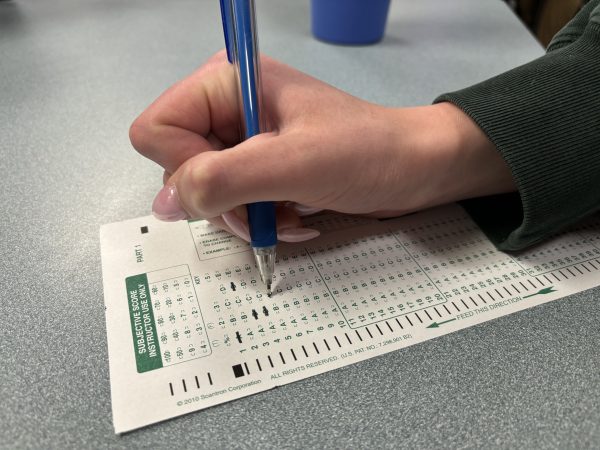Tuning in to hearing loss
As headphone use increases, risk of permanent damage rises

Decibel levels heard daily: The decibel level of a sound determines the potential damage caused to the inner ear. Earphones used at a high volume can reach up to 100 decibels.
October 2, 2013
Freshman Scott Eaves said he ignores cautions against listening to music with earphones too loudly and turns up his music to a high enough volume to muffle the noise around him.
“I listen loud enough to drown out most of the sound,” Eaves said.
A January 2013 study by the National Taiwan Normal University found a correlation between earphone use and an increase in hearing problems. A group of students who were regularly exposed to high noise levels, 90 percent of whom used earphones on a regular basis, were compared to a group of students who were not regularly exposed to high noise levels.
Even after hearing that one in five teens suffer hearing loss, senior Melrow Combs said he is skeptical of claims headphones can cause permanent hearing loss.
“We hear loud sounds everyday,” Combs said. “If it did affect our hearing, it wouldn’t be just the headphones.”
According to James Sidman, director of cleft craniofacial and velocardiofacial programs at Children’s Hospital and Clinics of Minnesota, listening to music at an increased level can damage the ear.
“When sound is really loud, whether it’s from earphones, a rifle shot or an airplane, those hair cells in the cochlea get damaged,” Sidman said. “Because it’s a nerve, once they get damaged they don’t recover.”
Sidman said with the increase of earphone use, doctors and companies realized the potential damage earphones pose on hearing.
“The companies that make the devices that play the music all agreed to put a maximum amount of decibels that can be played through (MP3 players) so that you shouldn’t be able to turn up the volume to a damaging level,” Sidman said. “It has not taken effect yet and not all the companies have agreed to those standards.”
Sidman said he suggests two ways to test if music is at a damaging level.
“If you play music loud enough that for a few hours your ears are ringing, you’ve caused damage,” Sidman said. “If you can hear your friends’ music playing when they have earphones in, they’re playing it too loud and they’re going to damage their hearing.”
Junior Katie Peterson said she uses headphones quite frequently and is aware of the consequences involved with listening to music too loudly.
“I know you can get hearing loss from headphones,” Peterson said. “If I noticed signs of hearing loss, I would see a doctor and see what they have to say.”
While high volumes can cause permanent hearing damage, Sidman said earphones are not completely at fault.
“There’s nothing inherently wrong with earphones,” Sidman said. “It’s just making the music too loud that’s the problem.”
Sidman said it is difficult to decide how loud is too loud when it comes to headphones because there is no specific volume that will harm the ear. It can be hard to tell when music is being played at a harmful volume because hearing loss does not occur immediately.
“(Hearing loss) is cumulative,” Sidman said. “It gets a little worse each time, by the time you’re in your 40s you have a significant hearing problem.”














